I’m bored, so I’m taking random cocktail recipes from The Savoy Cocktail Book (1930), giving them a try, and modifying/improving them if I think it’s necessary, and reporting my findings here.
Fernet-Branca Cocktail
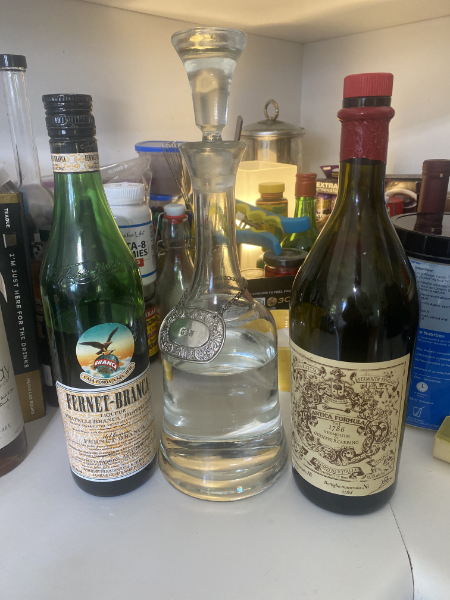 I figured I was going to hate this one before I even started: Fernet Branca, while a darling of professional bartenders[1], tastes gross to me. And indeed, the cocktail was just nasty.[2]
I figured I was going to hate this one before I even started: Fernet Branca, while a darling of professional bartenders[1], tastes gross to me. And indeed, the cocktail was just nasty.[2]
- ¼ Fernet-Branca
- ¼ Italian (sweet vermouth)
- ½ dry gin
There is a note beneath the recipe: “One of the best ‘morning-after’ cocktails ever invented. Fernet-Branca, an Italian vegetable extract, is a marvellous [sic] headache cure.”
Sure.
But what if you used one of the other amaros/bitters?
I randomly chose Vecchio Amaro Del Capo, which I think I bought because it appeared in some recipe I wanted to try, but with which I am not overly familiar — and it worked. It’s slightly sweet, not overly bitter, and way better than the mentholated cough syrup known as Fernet-Branca.
 Vecchio Amaro Cocktail
Vecchio Amaro Cocktail
- ¾ oz Vecchio Amaro Del Capo
- ¾ oz Italian (sweet vermouth)
- 1 ½ oz dry gin
Much better, and worth repeating. I may make further adjustments to its balance, play with the gin involved, etc. If so, I’ll report back.
SAVOY VARIATIONS SCORECARD:
- Savoy: 1
- Dale: 2
- Sink: 3
—————
[1] Personally, I think it’s one of those in-group things; they all take a shot of Fernet-Branca as a gesture of solidarity, and then they grimace as they clink shot glasses.
[2] You may very well like Fernet-Branca. If so, I will say that the original recipe will probably delight you. Plus, what is wrong with you?


 (6 people)
(6 people)

 And finally, the evening began.
And finally, the evening began.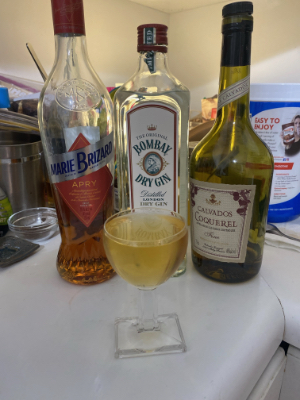

 Perhaps the gin was the issue. A more floral gin might take the edge off.
Perhaps the gin was the issue. A more floral gin might take the edge off.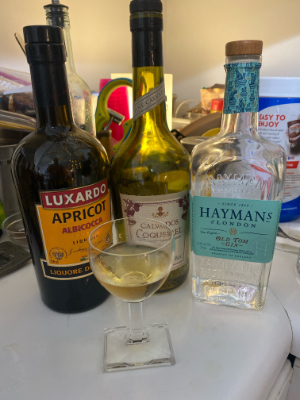 How about an Old Tom gin? And what if we switched to an apricot liqueur, which would be sweeter?
How about an Old Tom gin? And what if we switched to an apricot liqueur, which would be sweeter?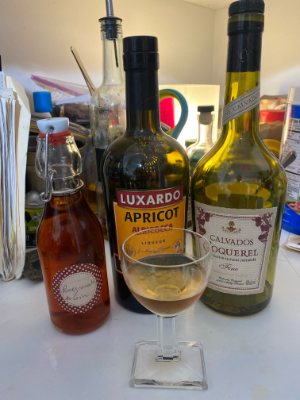
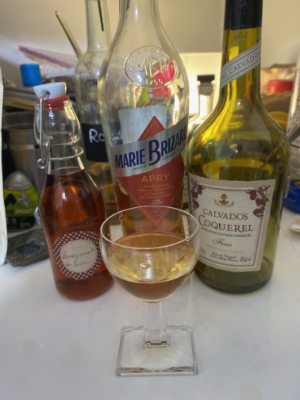 Last ditch effort: stick with the pomegranate gin, but go back to the apricot brandy.
Last ditch effort: stick with the pomegranate gin, but go back to the apricot brandy.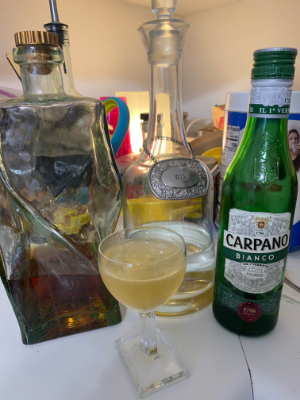 (6 people)
(6 people)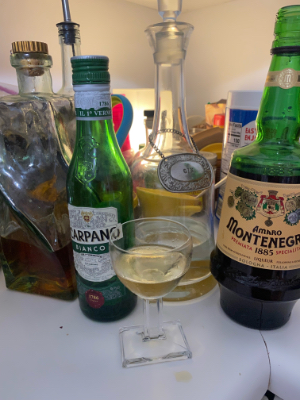
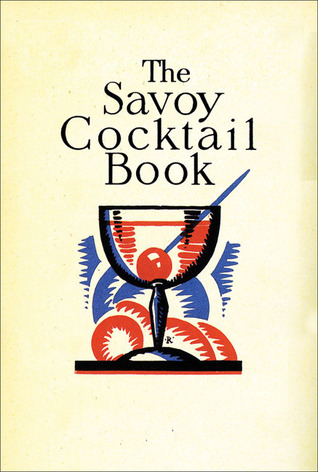 The Savoy is the work of the immortal
The Savoy is the work of the immortal 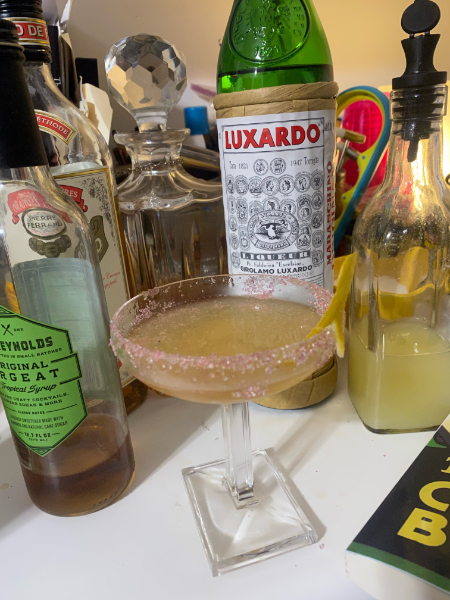
 The Fire Agate
The Fire Agate The Smokening™ (r)
The Smokening™ (r)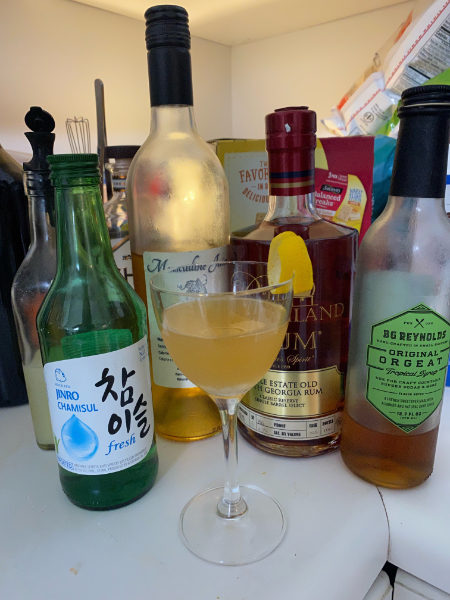 The Vivian
The Vivian